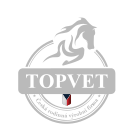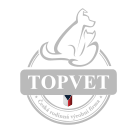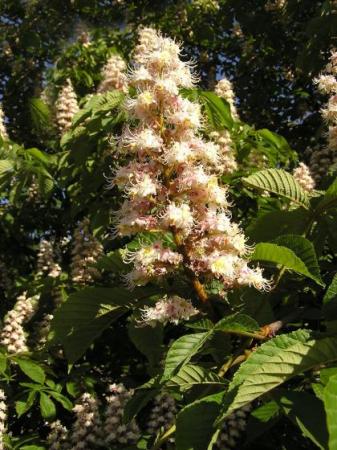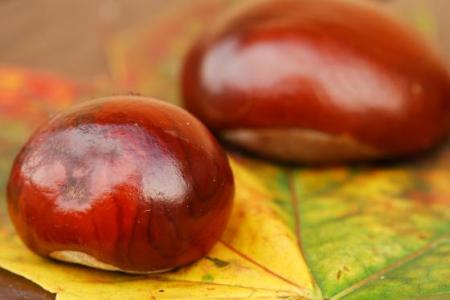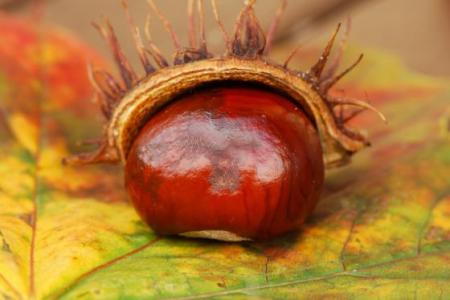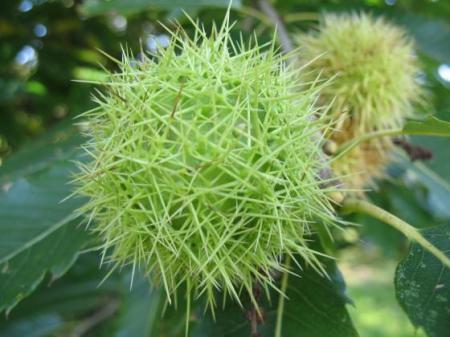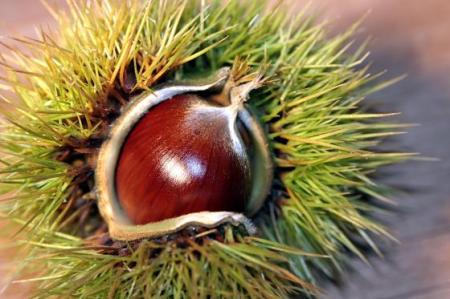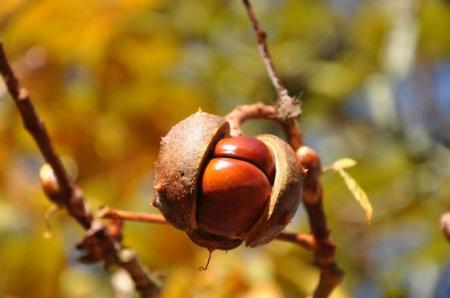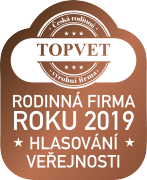Chestnut - Horse chestnut (Aesculus Hippocastanum L.)
Aesculus hippocastanum L.
Family: Chestnut family (Hippocastanaceae)
Vernacular and other names
Aesculus castanea, Hippocastanum vulgare, Chestnut, Horse chestnut, Wild chestnut, Wild chestnut, Pig chestnut.
History
In areas of natural occurrence, horsetail was used in a wide variety of ways (dyeing fabrics, quality wood, painful joints). It was first described as a medicinal plant by Matthioli in the 16th century. In 1615, a French traveler brought it from Istanbul and planted it in Paris. Over the next 100 years, it spread throughout Europe. California Indians threw the crushed fruits into lakes and rivers to drug the fish and make them easier to catch. From 1896 comes the first mention of the healing effect on hemorrhoids.
Occurrence
Horsetail is a tall tree native to the Balkans - more specifically, a small area in Macedonia (southwest Bulgaria and northern Greece). It was imported to our areas in the 18th century and today it is quite widespread in parks, avenues and gardens. Today it is spread practically all over the world and is one of the most beautiful trees.
Description
A chestnut tree is 15 to 30 meters tall and up to 2 meters in circumference. Wide, usually round crown. It has big sticky buds. The leaves are 15-20 cm long, palmately folded, toothed, have 5-7 leaflets and a long petiole. The white, red and yellow speckled flowers have 5 petals. The flowers are arranged in upright, cone-shaped racemes. Horsetail flowers in May. The fruit is a spiny capsule with one large seed - a chestnut. Since 1986, practically the entire European horsetail population has been attacked by a small horsetail butterfly (Carmeraria ohridella). The caterpillar feeds on the tissue of dying leaves. The protection is to thoroughly burn the fallen leaves in which the caterpillars hibernate.
Used parts
A seed, or also a chestnut. It is collected from September to October after the seed is released from the spiny capsule. The bark peeled in spring is rich in aesculin. The smell of the seed is slight and the taste bitter and acrid. The extract obtained from the seeds of horsetail is yellowish gray. In some recipes, the flower and young leaves are also used.
Active substances
The main content group is triterpenes (up to 10%), which we refer to collectively as aescin. Aescin, which is responsible for most of the effect of chestnut, exists in three variants (a-aescin, b-aescin and cryptoaescin). Other important flavonoids are quercetin, kaempferol and their derivatives. Active substances obtained from chestnut fruits in the form of an extract are referred to uniformly as (HCSE).
Classification
Vascular tonic, antiphlogistic.
Proven effects
Active substances obtained from chestnut (HCSE) increase the resistance of capillaries and improve venous tone. At the same time, they have an anti-inflammatory effect and speed up the absorption of swelling. Horsetail is very effective in chronic venous insufficiency (CVI) and in the treatment of fragile capillaries. New studies have clearly demonstrated its effectiveness as a vein tonic. Aesculin contained in horsetail bark reduces the permeability of capillaries and increases their resistance. These effects are used to treat varicose veins. It is also very effective for hemorrhoids. Clinical studies demonstrate effectiveness for so-called "heavy legs", nighttime leg cramps. It also reduces the itching of various forms of eczema. Accelerates the absorption of bruises and bruises. It is effective for painful joints and arthritis. It improves blood flow in the vessels, which stops blood clotting and prevents the formation of blood clots. Facilitates the excretion of urine in case of an enlarged prostate. It turns off the skin and acts like a tonic on the skin. For internal use, a daily dose of 250-310 mg of standardized extract is recommended, which corresponds to up to 100 mg of aescin. Commission E recommends chestnut for the treatment of varicose veins.
Usage
• For varicose veins
• Strengthens the vein wall and adjusts the tone of blood vessels in chronic venous insufficiency
• For hemorrhoids
• For cramps and so-called heavy legs
• Accelerates the absorption of bruises and bruises
• For painful joints
Conditions for achieving maximum effect
• Use only externally
• Can be applied in the form of massage or rubbing
• To increase the effect, we recommend applying in the form of a wrap. We apply a larger amount of the preparation and wrap it in food foil. It is good to wrap it in a towel at the end. Let it act like this for several hours, or until the next day.
Side effects
It is completely harmless when used externally. Relatively rare allergic reactions have also been documented in horse chestnut. When used internally, it can cause nausea or stomach cramps. Some sources speak of loss of coordination, vomiting, diarrhea and paralysis. The FDA classifies horseradish as an herb that is not safe for internal use (according to some sources, all parts are even poisonous). I even recorded information about the death of children after ingesting horseradish.
Toxicity
When taken internally, horsetail is said to be poisonous, although the toxicity of its saponins is relatively low. However, there are documented cases of intoxication (probably with extremely high doses). Preparations with high doses of aescin should not be combined with drugs that have a neurotoxic effect (eg gentamicin). Under no circumstances is internal use recommended for pregnant women and children, as it can cause severe convulsions. When administered internally, it damages the liver and kidneys. Outwardly, it is completely harmless. There are also documented cases of long-term administration of high doses (300-600 mg per day) without adverse health effects. If you want to take horseradish internally, I recommend it only for a short time and in the recommended doses.
Curiosity
• The name horse horse got its name because the Turks used the seed as a tonic for draft horses and for shortness of breath in horses.
• Another possibility of how the name came about is that the fruit reminded our ancestors of a horse's eye.
• Goats and pigs like roe deer very much. Probably because of its bitter taste.
• According to old superstitions, we should always carry chestnuts in our pockets because they protect against evil. They are effective against evil until they lose their luster.
• Chestnut was used as a source of starch during World War II.
• Some mammals are able to break down toxins from the chestnut and consume them completely safely.
• The chestnut flower is a symbol of Kyiv, the capital of Ukraine.
Recipes
Alcoholic extracts (optimally in 30% alcohol).
Bark decoction: 1 spoonful of horsetail bark for two glasses of water. This is a traditional recipe against diarrhea, hemorrhoids and varicose veins. At this point, I have to mention again that according to some sources, all parts of horsetail are poisonous when used internally.
Herbs with similar effects
Vilín, American gorse, Plum-leaved viburnum.
In addition to personal experience, the article used information from clinical studies, articles and publications:
• Pharmacopée française. Paris, Adrapharm, 1996.
• Deutsches Arzneibuch. Stuttgart, Deutscher Apotheker Verlag, 1998.
• Blaschek W et al., eds. Hagers Handbuch der pharmazeutischen Praxis. Folgeband 2: Drogen A – K, 5th ed. Berlin, Springer-Verlag, 1998.
• Youngken HW. Textbook of pharmacognosy, 6th ed. Philadelphia, PA, Blakiston, 1950.
• Bruneton J. Pharmacognosy, phytochemistry, medicinal plants. Paris, Lavoisier, 1995.
• Farnsworth NR, ed. NAPRALERT database. Chicago, University of Illinois at Chicago, IL, February 9, 1998 production (an online database available directly through the University of Illinois at Chicago or through the Scientific and Technical Network [STN] of Chemical Abstracts Services).
• Bombardelli E, Morazzoni P. Aesculus hippocastanum L. Fitoterapia, 1996, 67:483–510.
• Quality control methods for medicinal plant materials. Geneva, World Health Organization, 1998.
• Bassler D, Okpanyi S, Schrodter A, et al. Bioavailability of beta-aescin from horse chestnut seed extract: comparative clinical studies of two Galenic formulations. Adv Ther 2003 Sep-Oct;20(5):295-304.
• European pharmacopoeia, 3rd ed. Strasbourg, Council of Europe, 1996.
• Ernst E, Pittler MH, Stevinson C. Complementary/alternative medicine in dermatology: evidence-assessed efficacy of two diseases and two treatments. Am J Clin Dermatol 2002;3(5):341-8.
• Guidelines for predicting dietary intake of pesticide residues, 2nd rev. ed. Geneva, World Health Organization, 1997 (document WHO/FSF/FOS/97.7).
• Vanhaelen M, Vanhaelen-Fastre R. Quantitative determination of biologically active constituents in medicinal plant crude extracts by thin-layer chromatography – densitometry. Journal of Chromatography, 1983, 281:263–271.
• Alter H. Zur medikamentösen Therapie der Varikosis. Zeitschrift für Allgemeine Medizin, 1973, 49:1301–1304.
• Bisler H et al. Wirkung von Rosskastaniensamenextrakt auf die transkapilläre Filtration
• bei chronischer venöser Insuffizienz. Deutsche Medizinische Wochenschrift, 1986, 111:1321–1328.
• Diehm C et al. Medical edema protection - clinical benefit in patients with chronic deep vein incompetence. A placebo-controlled double-blind study. Vasa, 1992, 21:188–192.
• Diehm C et al. Comparison of leg compression stocking and oral horse-chestnut seed extract therapy in patients with chronic venous insufficiency. Lancet, 1996, 347:292–294.
• Friederich HC et al. Ein Beitrag zur Bewertung von intern wirksamen Venenpharmaka. Zeitschrift für Hautkrankheiten, 1978, 53:369–374.
• Suter A, Bommer S, Rechner J. Treatment of patients with venous insufficiency with fresh plant horse chestnut seed extract: a review of 5 clinical studies. Adv Ther 2006 Jan-Feb;23(1):179-90.
• Lohr E et al. Ödemprotektive Therapie bei chronischer Veneninsuffizienz mit Ödemneigung. Münchener Medizinische Wochenschrift, 1986, 128:579–581.
• Steiner M, Hillemanns HG. Untersuchung zur ödemprotektiven Wirkung eines Venentherapeutikums. Münchener Medizinische Wochenschrift, 1986, 31:551–552.
• Calabrese C, Preston P. Äscin bei der Behandlung von Hämatomen - eine randomisierte
• Doppelblind - Studie. Zeitschrift für Phytotherapie, 1994, 60:112.
• Siebert U, Brach M, Sroczynski G, et al. Efficacy, routine effectiveness, and safety of horse chestnut seed extract in the treatment of chronic venous insufficiency. A meta-analysis of randomized controlled trials and large observational studies. Int Angiol 2002;21(4):305-315.
• Geissbühler, Degenring. Behandlung von chronisch venöser Insuffizienz mit Aesculaforce Venengel. Schweizerische Zeitschrift für Ganzheits Medizin, 1999, 11:82–87.
• WHO monographs on selected medicinal plants 146
• Arnold M, Przerwa M. Die therapeutische Beeinflussbarkeit experimentell erzeugter Ödeme. Arzneimittel-Forschung, 1976, 26:402–409.
• Cebo B et al. Pharmacological properties of saponin fractions obtained from domestic crude drugs: Saponaria officinalis, Primula officinalis and Aesculus hippocastanum. Herba Polonica, 1976, 22:154–162.
• Guillaume M, Padioleau F. Veinotonic effect, vascular protection, anti-inflammatory and free-radical scavenging properties of horse chestnut extract. Arzneimittel - Forschung, 1994, 44:25–35.
• Damas P et al. Anti-inflammatory activity of escin. Bulletin de la Société royale des Sciences de Ličge, 1976, 45:436–440.
• Preziosi P, Manca P. The anti-edematous and anti-inflammatory effects of aescin and its relation to the hypophyseal – adrenal system. Arzneimittel-Forschung, 1965, 15:404–
413.
• Facino RM et al. Anti-elastase and anti-hyaluronidase activities of saponins and sapogenins from Hedera helix, Aesculus hippocastanum, and Ruscus aculeatus: factors contributing to their efficacy in the treatment of venous insufficiency. Archiv der Pharmazie (Weinheim), 1995, 328:720–724.
• Rehn D et al. Comparative clinical efficacy and tolerability of oxerutins and horse chestnut extract in patients with chronic venous insufficiency. Arzneimittel-Forschung, 1996, 46:483–487.
• Pauschinger P. Neuere Untersuchungen zur Wirkung von Venostasin retard auf die kapilläre Funktion. Ergebnisse der Angiologie, 1984, 30:129–137.
• Marshall, Dormandy. Oedema of long-distance flights. Phlebology, 1987, 2:123–124.
• Pittler MH, Ernst E. Horse-chestnut seed extract for chronic venous insufficiency. A criteria-based systematic review. Archives of Dermatology, 1998, 134:1356–1360.
• Semen Hippocastani 147
• Calabrese C, Preston P. Report on the results of a double-blind, randomized, singledose trial of a topical 2% aescin gel versus placebo in the acute treatment of experimentally induced hematoma in volunteers. Planta Medica, 1993, 59:394–397.
• Grasso A, Corvaglia E. Due casi di sospetta tubulonefrosi tossica da escina. Gazzetta Medica Italiana, 1976, 135:581–584.
• Liehn HD et al. A toxicological study of extractum Hippocastani seed (EHS). Panminerva Medicine, 1972, 14:84–91.
• Blumenthal M et al., eds. The complete German Commission E monographs. Austin, TX, American Botanical Council, 1998.
• Escribano et al. Contact urticaria due to aescin. Contact Dermatitis, 1997, 37:233–253.
• Sélection du Readerś Digest, 2003.
• Michael Castleman, The Healing Herbs, 2001.
• Johannes Gottfried Mayer, Bernhard Uehleke, páter Kilian Saum, Handbuch Der Klosterheilkunde, 2002.
• Dionýz Dugas, 2007.
• Jadwiga Górnicka, Apteka natury, 2002.
• and more
Author: Dr. Jiří Pantůček and the Topvet collective
© Copyright (2009) MVDr. Jiří Pantůček - all rights reserved. No part of this document may be reproduced or transmitted in any form or by any means, electronic, including copying, recording, or by any information retrieval system, including websites, without written permission.
All information contained in the herbarium has not been evaluated by the control authorities for the control of dietary supplements. All information contained in this plant herbarium is for educational, informative and entertainment purposes. This information should not be used for diagnosis, indication or change of treatment prescribed by a doctor. The plants listed in the herbarium are not substitutes for medicines. In the case of any treatment, it is necessary to consult the use of dietary supplements with your attending physician.

